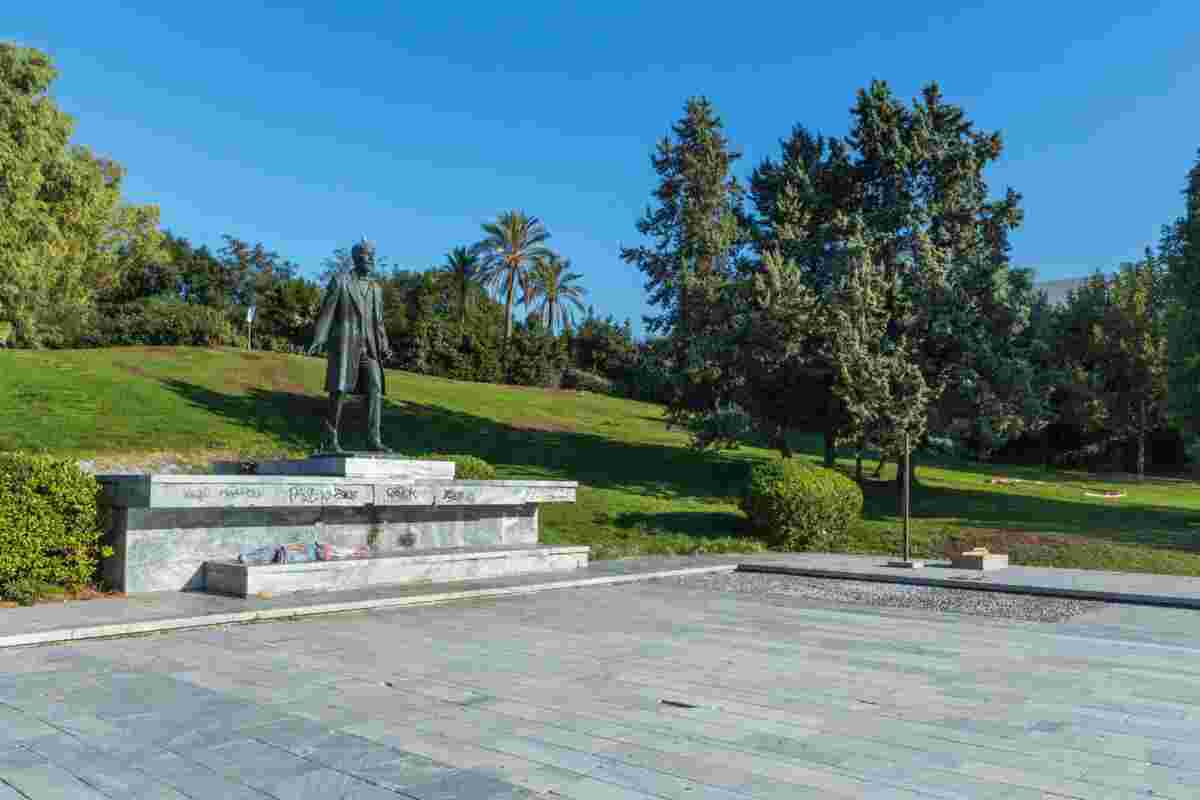
EXHIBITION “UNHAPPY MONUMENTS”
The exhibition “Unhappy Monuments” features 14 of the visual artists awarded the Stavros Niarchos Foundation Artist Fellowship 2019 by ARTWORKS. Inspired by Marcel Duchamp’s Unhappy Readymade (1919), the exhibition curator asked the participating artists to contemplate the notion of the anti-monument. Contrary to the permanent, monumental and venerable characteristics of monuments, the anti-monument is temporary, fragile; it does not seek to capture the viewer’s attention, while often requiring the viewer’s participation. The artworks created by the artists specifically for this exhibition, converse with the aesthetic identity and character of the Eleftherias Park, which is a popular leisure spot for Athenians. The exhibition “Unhappy Monuments” primarily aims to bring into view unusual monuments, allowing them to be discovered by the audience during their leisurely walks in the Park.
Participating artists: Panagiotis Vorrias, Theodoros Giannakis, Apollonas Glykas, Anastasia Douka, Spiros Kokkonis, Katerina Komianou,Karolina Krasouli ,Konstantinos Kotsis, Virginia Mastrogiannaki, Aggeliki Bozou, Margarita Bofiliou, Maria Nikiforaki, Marina Papadaki, Maria Tsagkari
Curated by: Christoforos Marinos, Art historian, OPANDA curator of art exhibitions and events
Organised by: OPANDA & ARTWORKS
ARTWORKS Founding Donor & Exhibition Donor: Stavros Niarchos Foundation
Duration: 10-20 October 2020
Opening hours: 11.00-19.00
Eleftherias Park, Vasilissis Sofias Avenue, Megaro Mousikis metro station
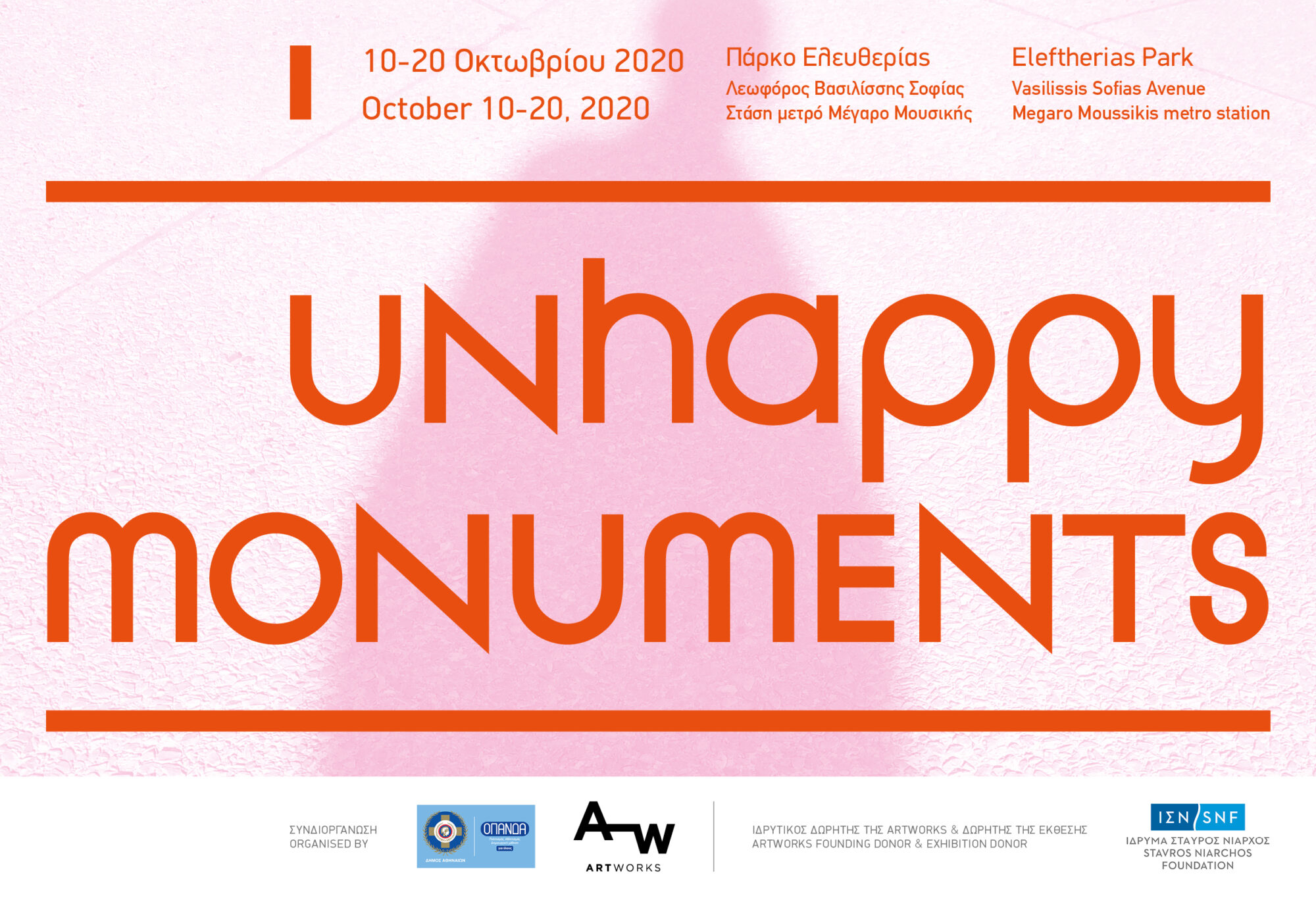
In accordance with the Hellenic National Public Health Organization (NPHO) and the National Committee for the Protection of Public Health regulations, all protection and social distancing measures will be taken during the exhibition. Τhe use of mask is mandatory where visitors cannot maintain the distance of at least 1.5 meters.
Due to the intermittent changes regarding public health measures, please note that all updates regarding the exhibition will be announced as soon as possible.
Turn the Pages installation at Eleftherias Park concerns the outdoor activity of reading in the park. It conceptually highlights the act of reading as an experience involving almost all senses, juxtaposing the physical qualities of a book and the almost overwhelmingly fast transmission of digital information. Browsing a book, turning the pages – little, low-level sound patterns at the threshold of audibility gain a voice, a platform, take on new significance in this artwork. Moreover, reference is made to the linguistic metaphor of change, of ‘turning a page.’
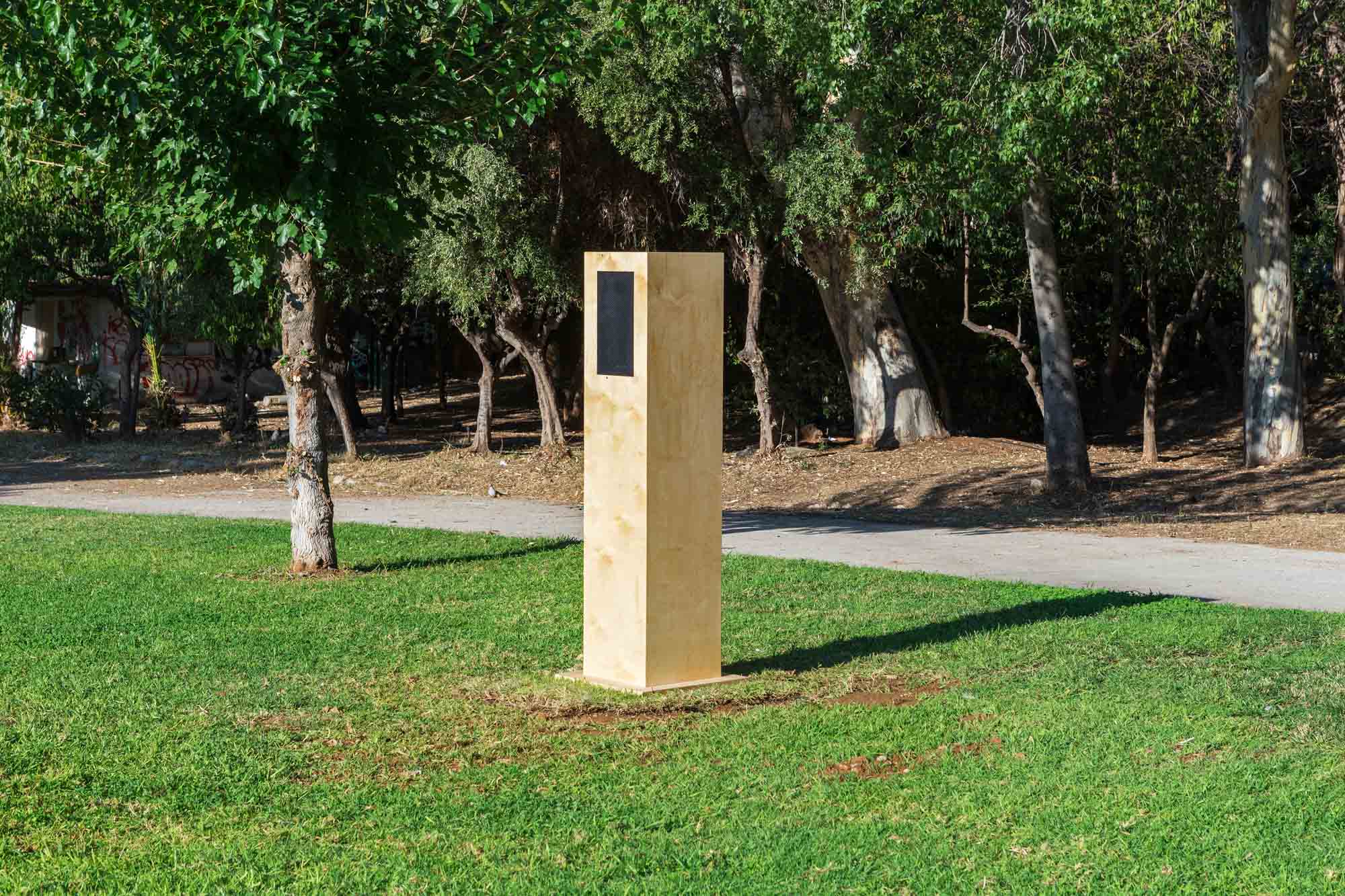
No Faces not Morphs is an aesthetic superimposition, a connected time, seemingly still – a kind of space-time geometry in which past, present, and future are but relations of an insistent trompe l’oeil. Yet another trompe l’oeil of lingering primitivism – a quantum entity without a face, without a form, a cosmo-tech superimposition. An artificial intelligence entity, not made of clay, unable to dream, to return to dust.

Any guest to the funeral of a remote control would expect that this bulletin would include detailed information on the function that brought the remote to this. Yet, TELETOMB is the tomb of the transmitter in the protective cover. My grandmother used to do that, for some reason; it always seemed weird to me that someone sought to preserve it for all eternity. Naturally, one must bear in mind that whether it is valuable, or irreplaceable, is beside the point – it is its association with companionship that makes it so vitally important. Besides, no remote-control manual ever – no matter how accurately it described all functions – could initiate the reader into the art of zapping.
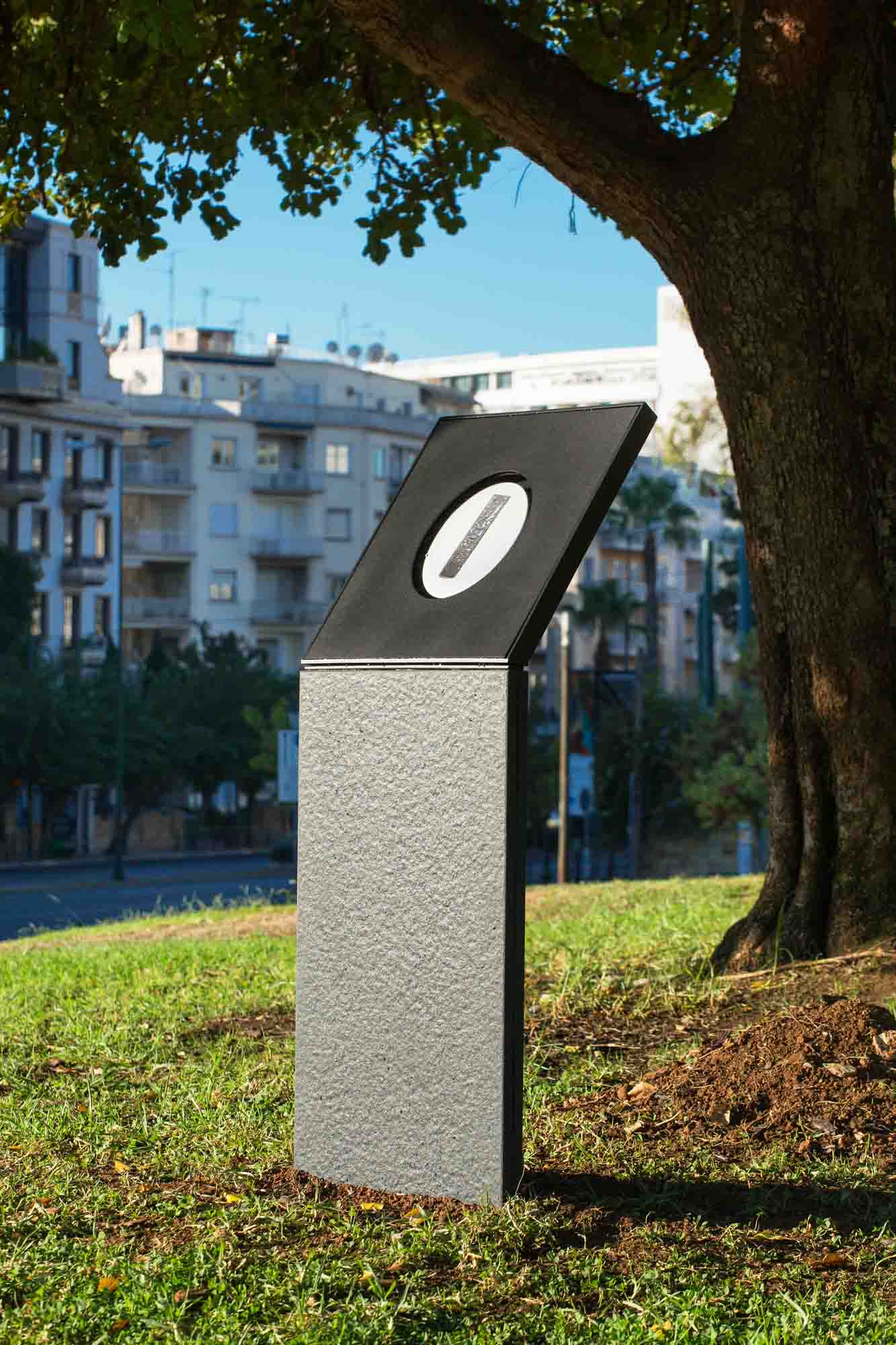
The starting point is Dostoevsky’s short story of the same title, in which a German entrepreneur places a crocodile on display in Saint Petersburg; Ivan Matveich is one of the people who pay for the spectacle. Yet, after teasing the seemingly sluggish reptile, he is swallowed whole. Absurdly, he remains alive inside the crocodile – only having dropped his spectacles in the process – and resolves to continue his life from the reptile’s belly, encouraged by friends and acquaintances.

A grid of interdependent references highlights common needs. Such as the need to connect with something behind, or underneath. A human-friendly terrain, side by side with acts of modern references and art. The sun is intolerable; the metal pylons get warm; the stones are still cold. The art of sculpture used to be hard work – similar to that of the marble-cutter; today things are different. Nature has left a spot here, and it changes; you look at your mobile. In a constant revisiting of everyday life, the references are multiple stimuli, evoking specific sensitivities very close to memory, as well as desire. On the grid, at times, you encounter your parents, the earth, the trees, us. You stand there to register your position. The grid nourishes our core need to connect.
Text: Michael Stamos
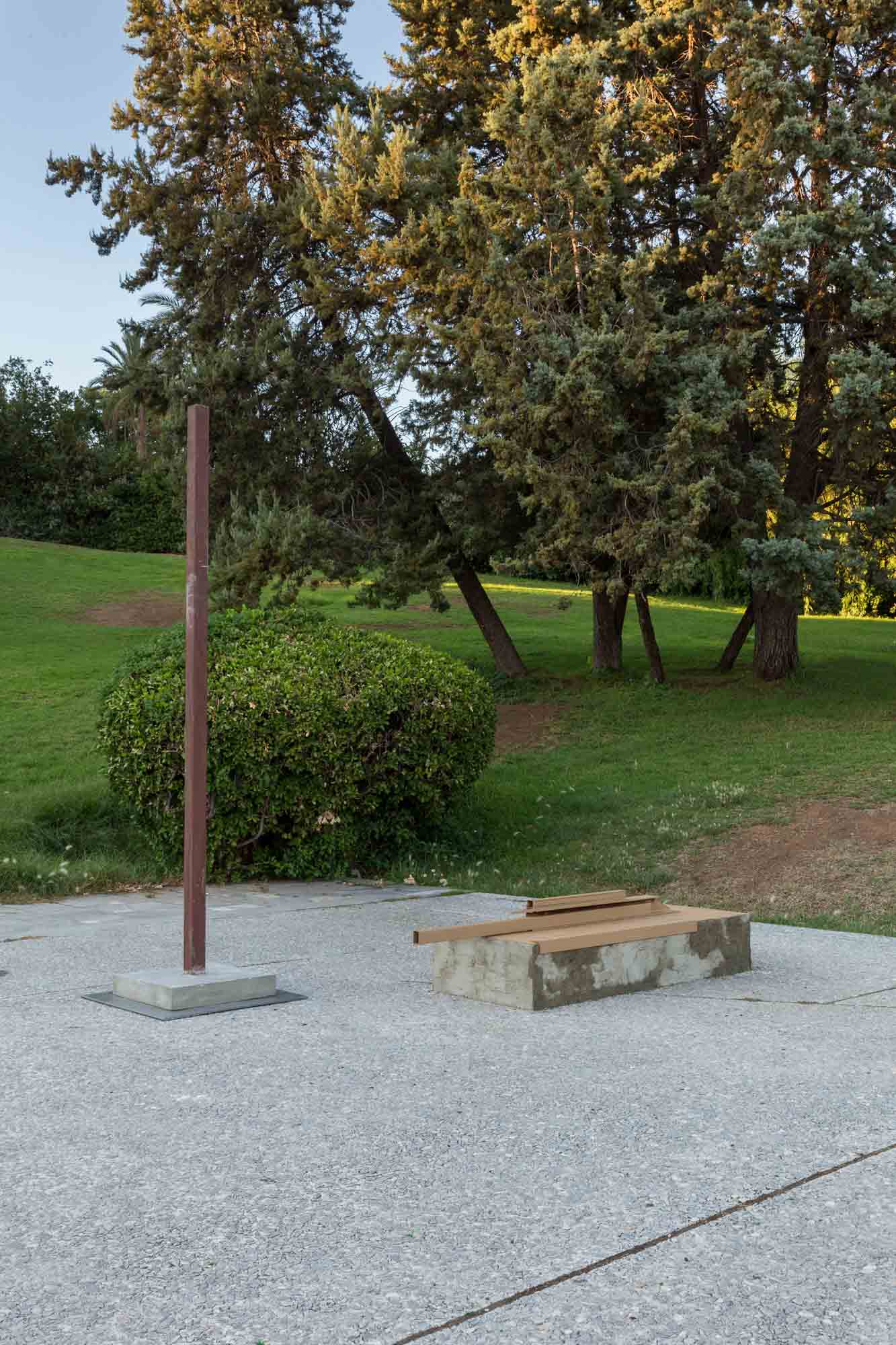
Whoever raises the great stones sinks;
I’ve raised these stones as long as I was able
I’ve loved these stones as long as I was able
these stones, my fate.
Wounded by my own soil
tortured by my own shirt
condemned by my own gods,
these stones.
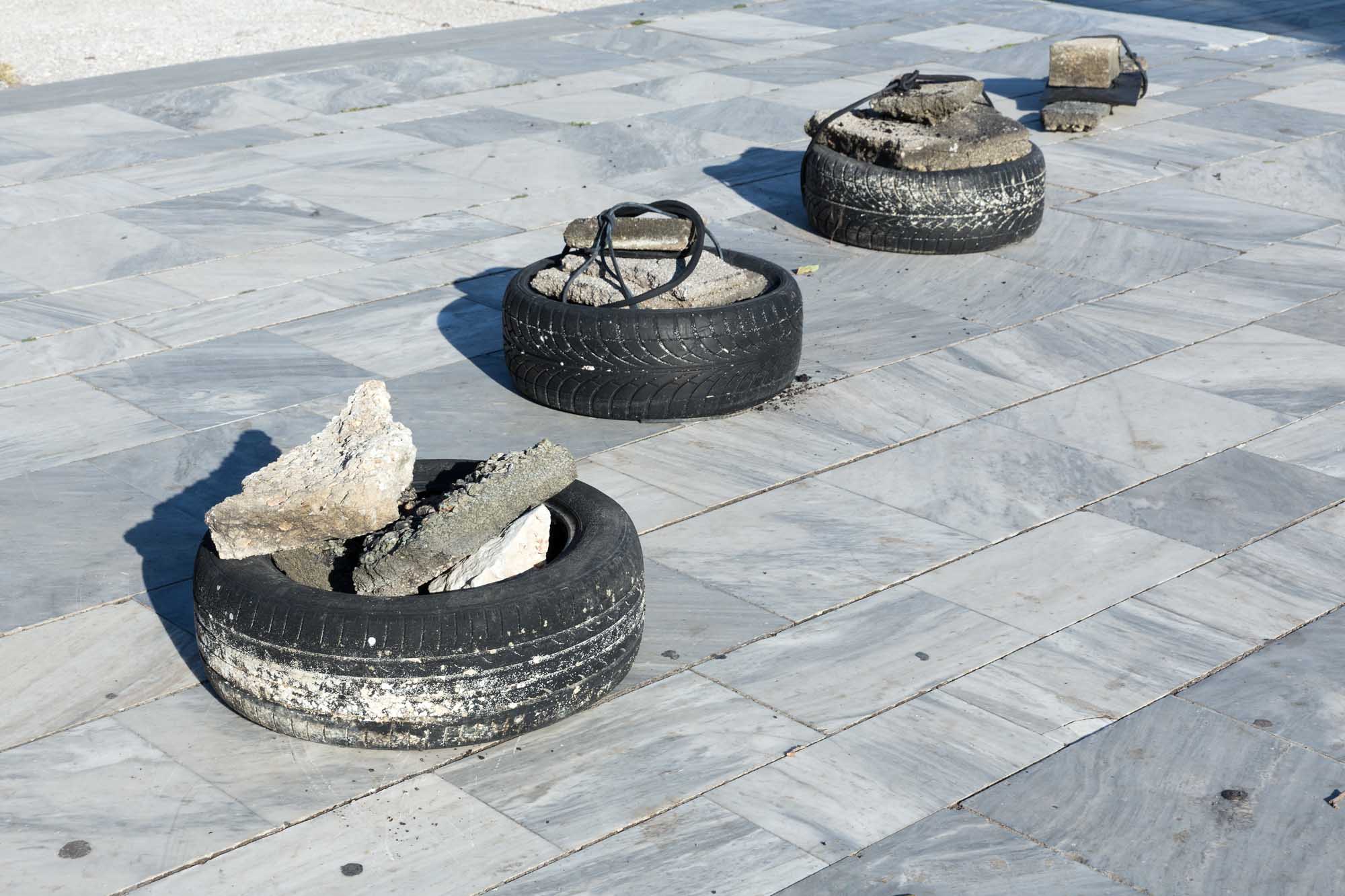
Alphabet (2016-2020), made of painted wooden sticks assembled in various arrangements, originates in an early watercolour landscape. Made of horizontal coloured lines, the patterns evoke the memory of a landscape rather than actually depicting it. With this new installation of Alphabet at Eleftherias Park, this feeling is given physical space, returning the colours to their place of origin. Sometimes hidden and sometimes showing, in various locations within the park, the wooden sticks create ever-new permutations. Their specific placements call for imaginary walks of observation, exploration, and discovery – like a treasure hunt.
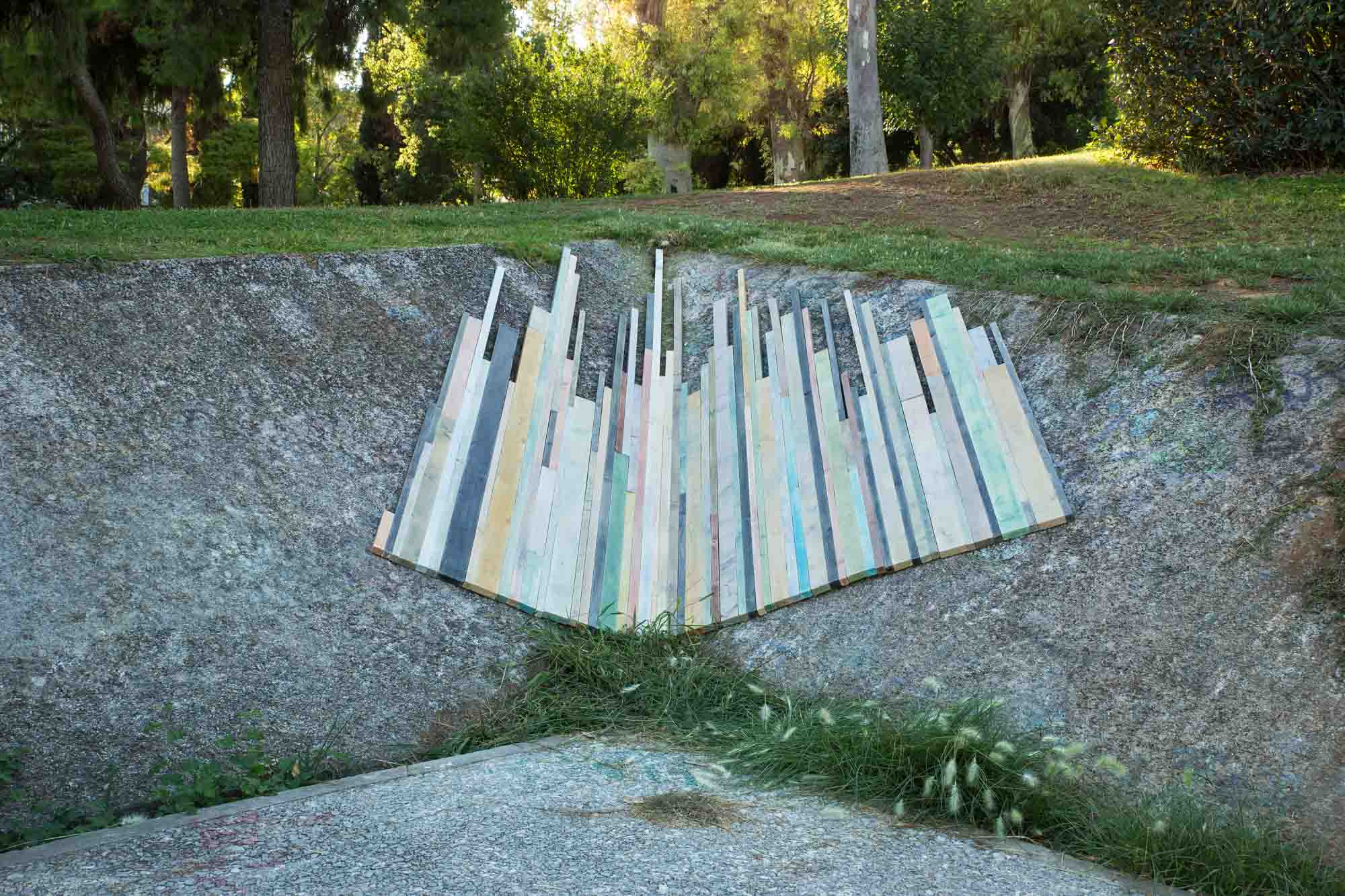
Jomo Kenyatta finishes speaking about the Bible and colonialists at the precise moment when indigenous people open their eyes only to find out that they have lost their lands. In a blink, the process of fencing off the common lands has been completed. This fundamental process signals the shift from an earlier to the current financial system. It is a formative moment for the concepts of public and private space, as well as for redefining the human connection to the natural environment. The incomplete circle of this artwork restores the archetypal communal condition, such as the village square with the bench and the old plane tree, as well as the communal threshing floor.
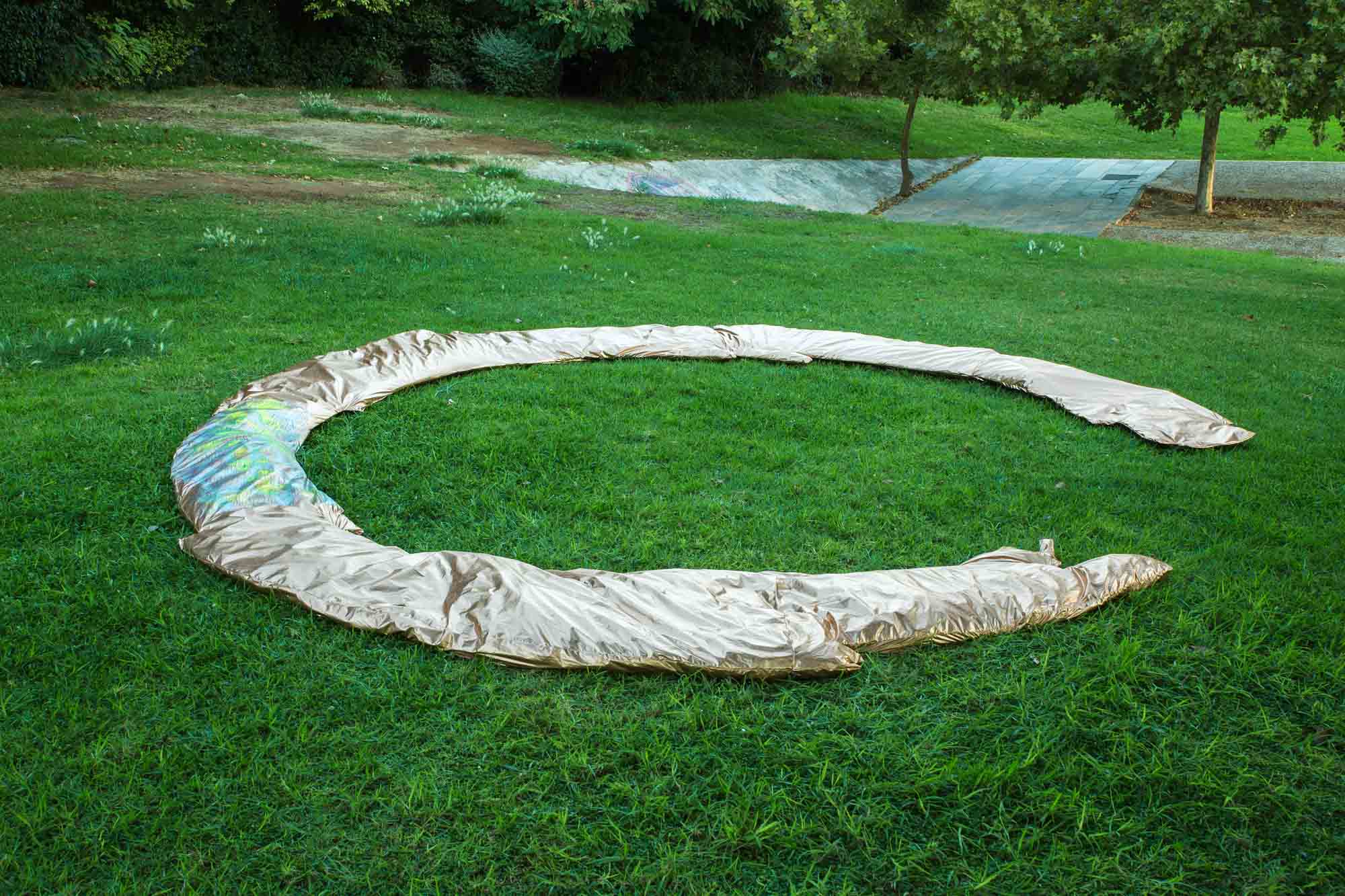
step is a spin-off of the sculpture Ladder, installed at the Old Bath House of Nisyros since 2017. The word step is used both in the sense of a stair and movement of the feet, as well as to allude to the workout accessory for building muscle tone. Made in Nisyros pumice stone and clay, step will be painted in fluorescent yellow for the installation at the Eleftherias Park, to evoke its sulphurous, volcanic origin in the daytime and gain a luminous autonomy in the night-time, after having absorbed the day’s solar energy.
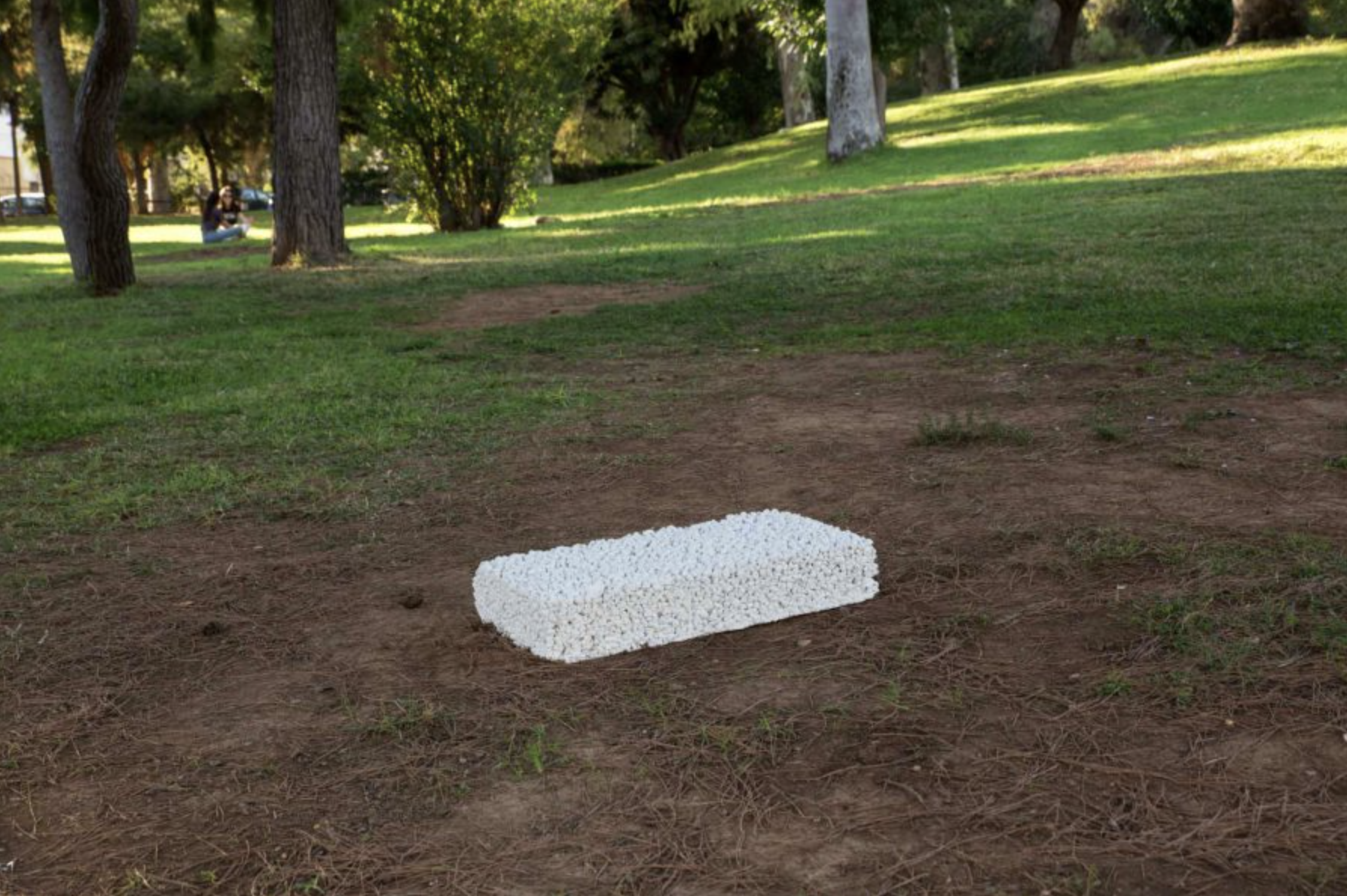
The phrase ‘It’s the stupidest tea-party I ever was at in all my life’ is Alice’s last words after walking off the bizarre and surrealistic tea party in Wonderland. The transformation of her words into a question (Was my life the stupidest tea-party I have ever been at?) is accompanied by upending the surface of the table, along with its symbolism of stability and apparent unity. On the vertical axis, the resulting totemic construction alternates elements of support and surface, before arriving at a utopian reference to a garden, or plate – or a garden in the plate.
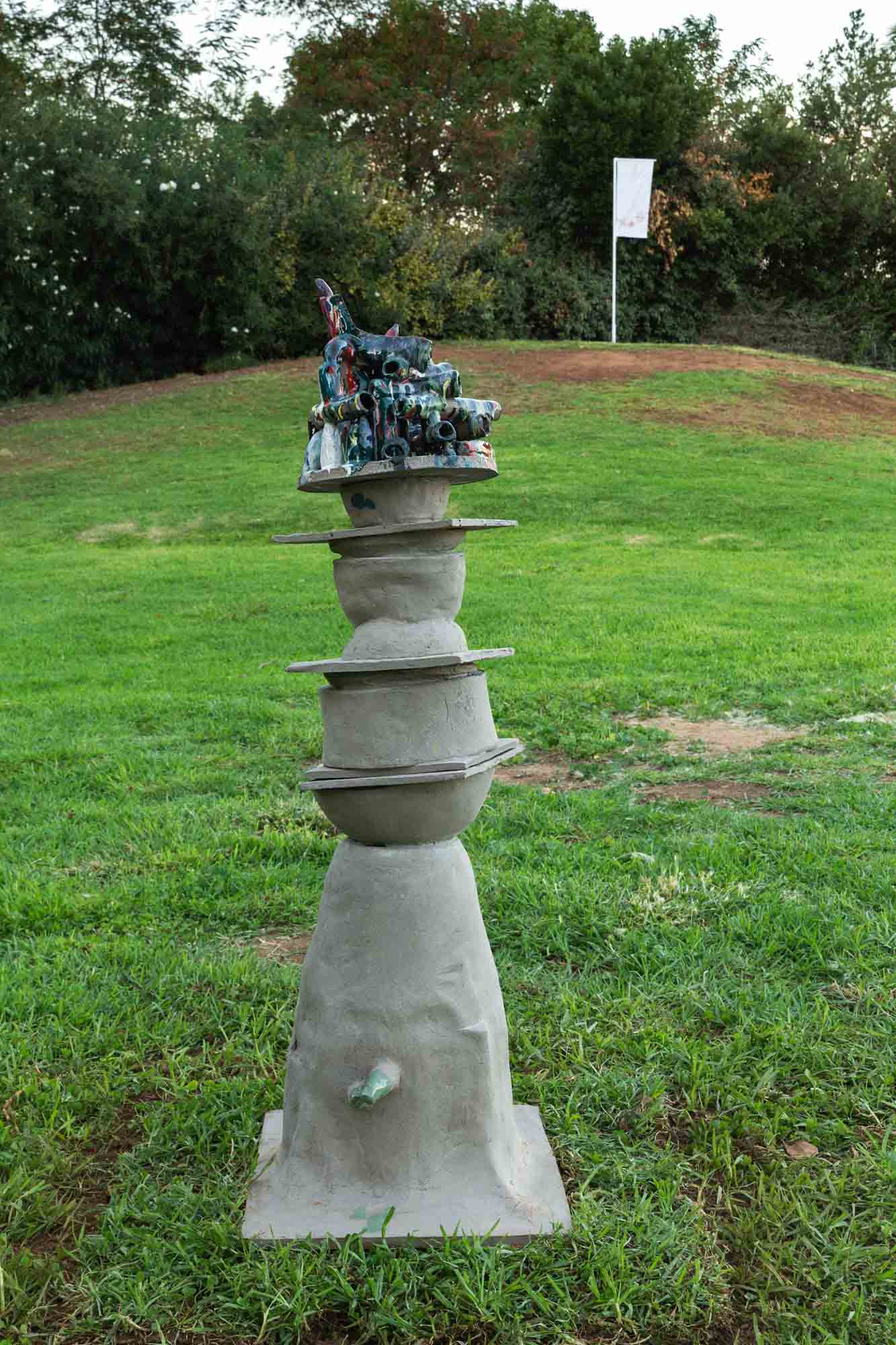
Saturday, 10/10, 19.00
A choreography revolving around an experience of landscape and emotions, Water Boatman serves as a temporary monument of a personal adventure in time. Borrowing from African dance, which is closely related to the human connectedness with the body, history, and sensuality, this piece proposes an alternative articulation of a personal narrative.
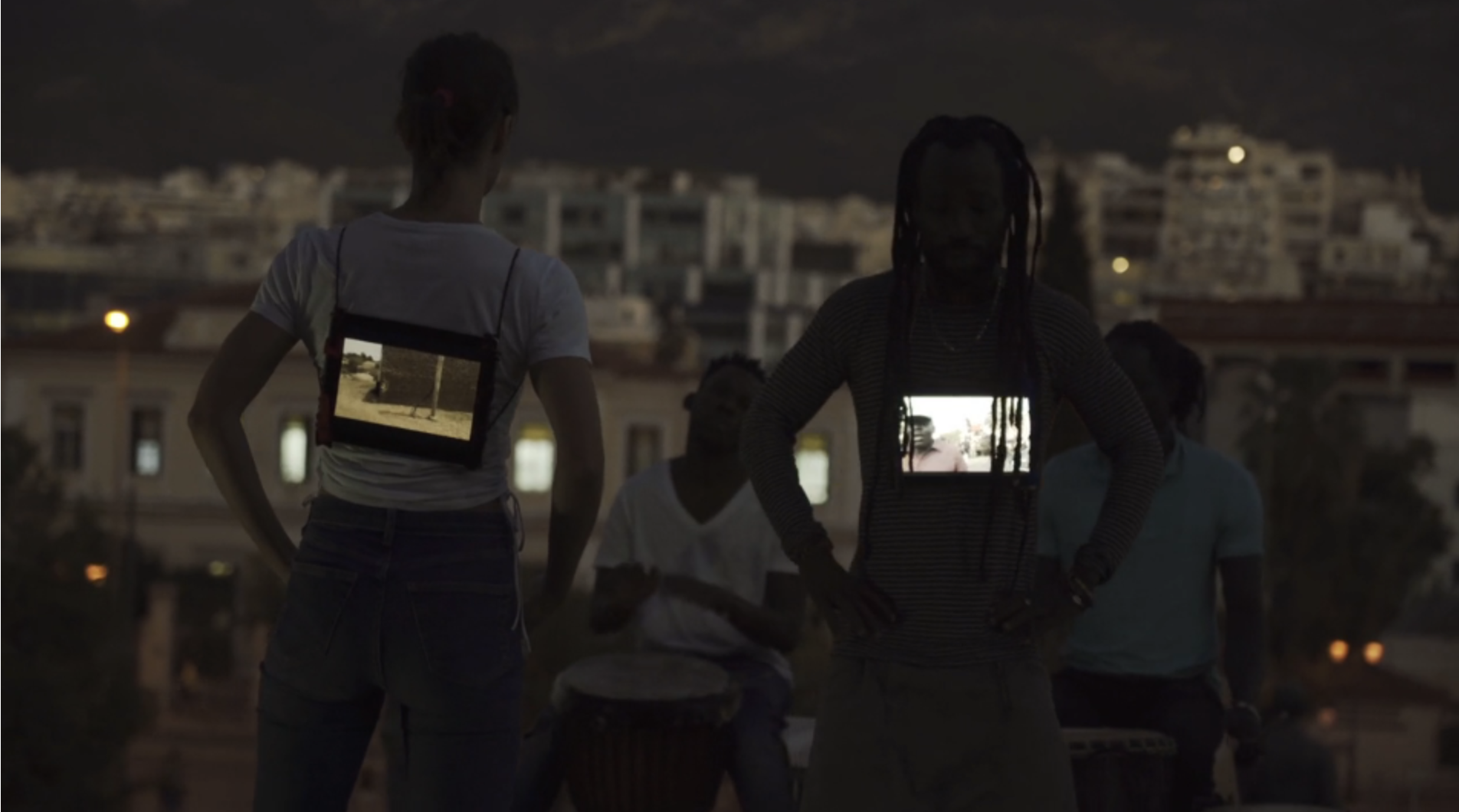
The object for sitting or reclining is another form of clearly demarcating the subject’s body and identity. It is also a trend towards the constant distancing of the body towards the earth, hence control over nature. Or proof that we have lost that control and are therefore more afraid of it than ever before. The separation, which we must defend to feel safe, does not ensure that; and the reality of our shared identities, living and non-living, is radically different from this desire. The flux and mutation of interchangeable elements is characteristic of the process of propagation.
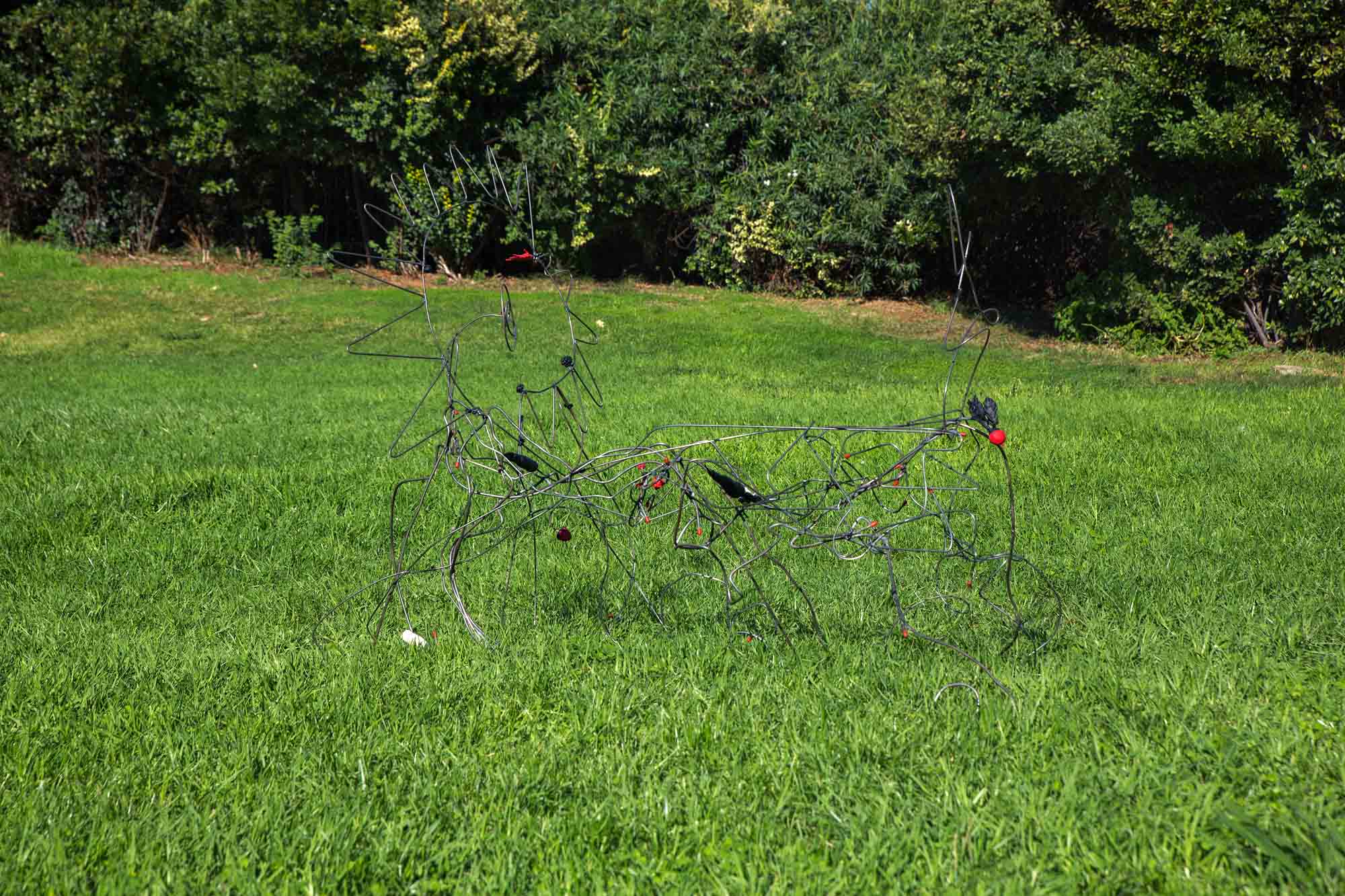
The Bread and Butter flag is an in-situ artwork for the Eleftherias Park, involving the timeless, conceptually charged symbolism of bread and its social implications. On the one hand, the flag is used to depict an emblem, or symbol, and as a boundary-setting device; on the other hand, there is the theme of food, which is a resource indispensable to survival. With the focus firmly on the value of the material, the mass-production tool, and the concept of ‘sharing,’ this artwork is a reflection on the social boundaries set by our main ‘qualities’ and our means of nourishment.

“#loveshots, or collected histories of an infinite longing“ is a participatory, interactive cinema, drawing parallels between love and ephemerality, cinema and randomness. The script of an enigmatic love story is fragmented into its phrases and randomly allocated to the exhibition audience, which is encouraged to enact it. A transparent frame in the 16:9 cinematic aspect ratio shows an excerpt of the script in the form of a subtitle, encouraging viewers to reach a personal interpretation of the text within and without the exhibition space. Visitors are invited to upload the images and footage they create on Instagram, accompanied by the hashtag #loveshots, composing a digital, poetic landscape of multiple versions of the script.
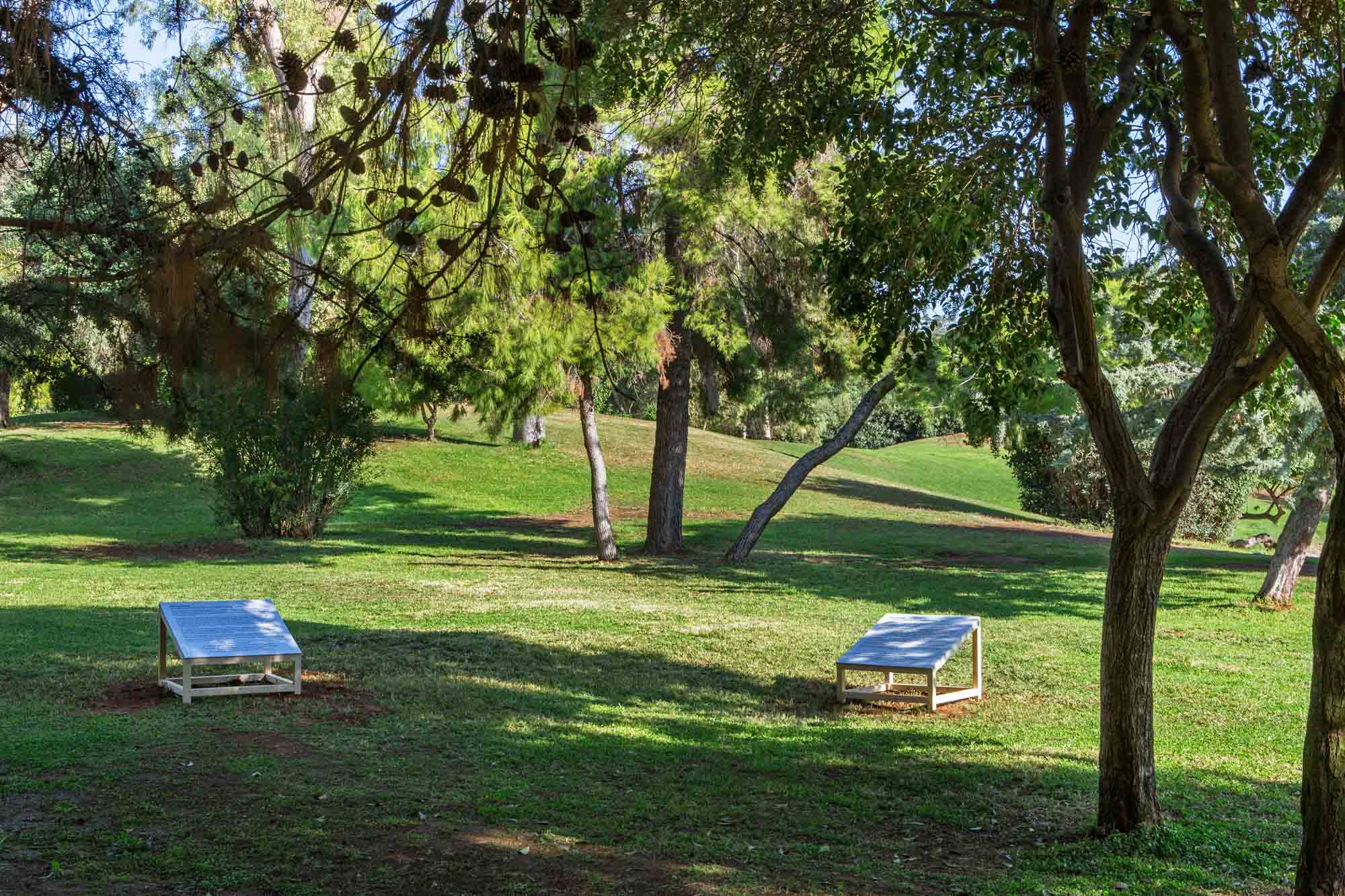
Photos: Nikos Alexopoulos